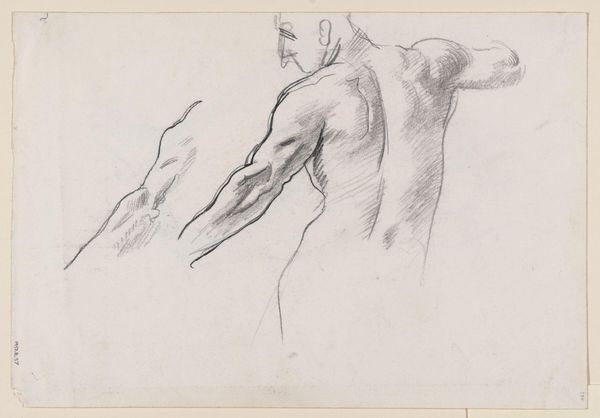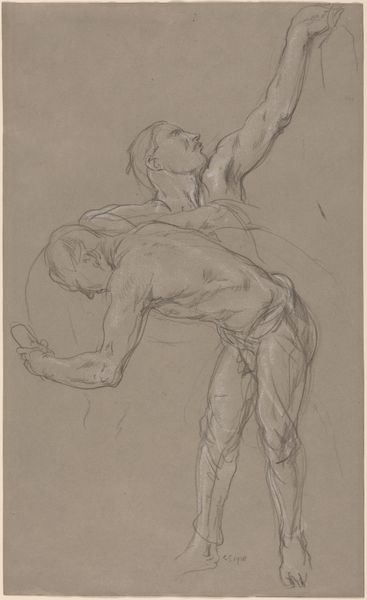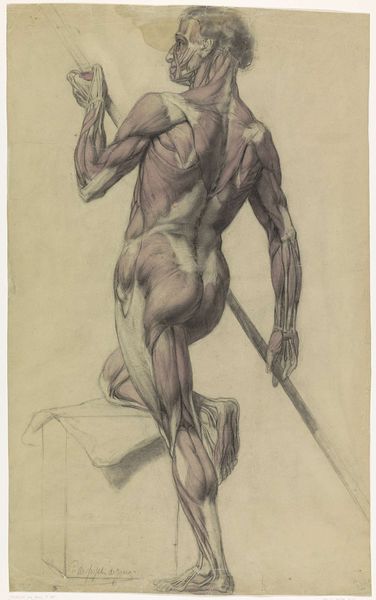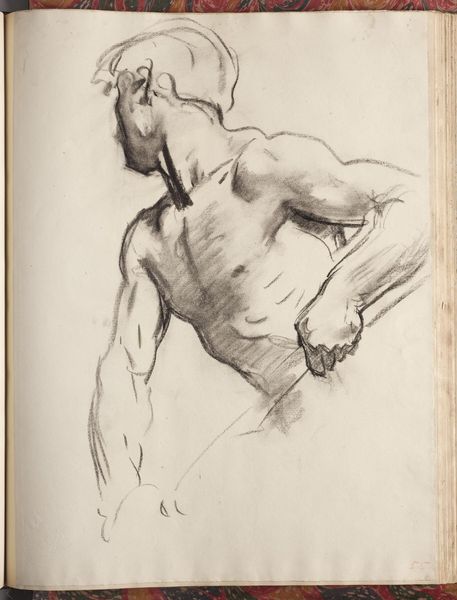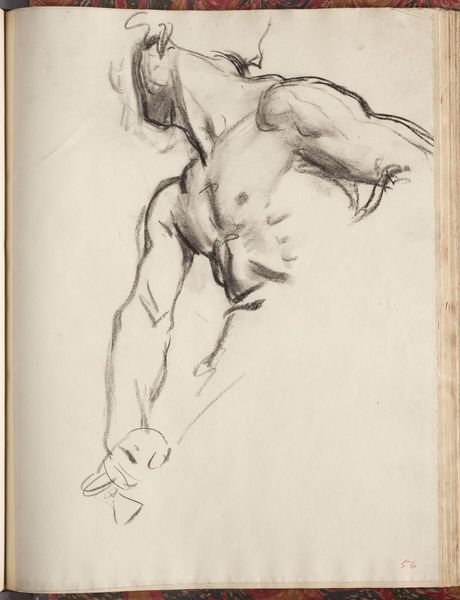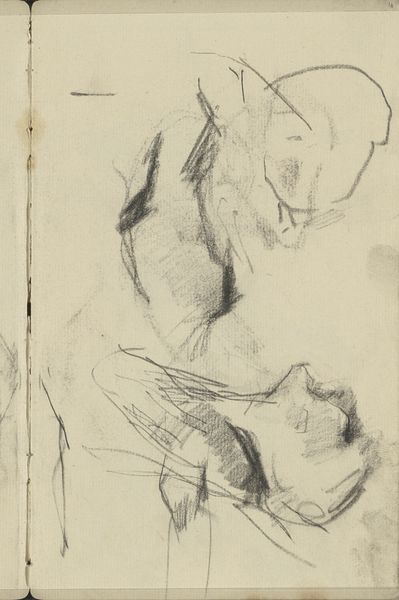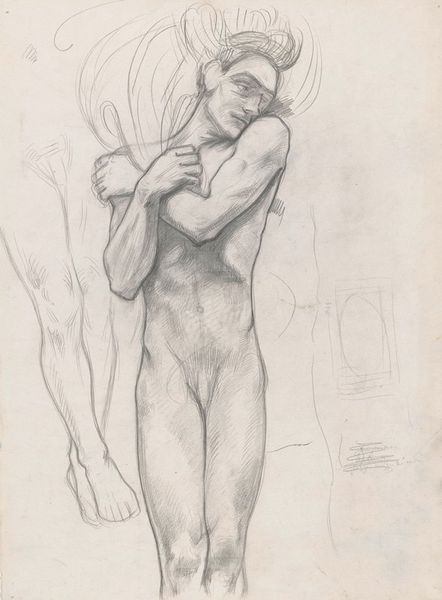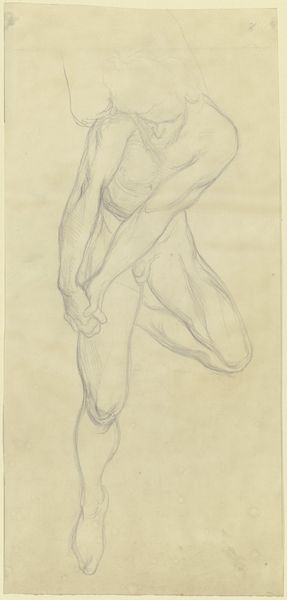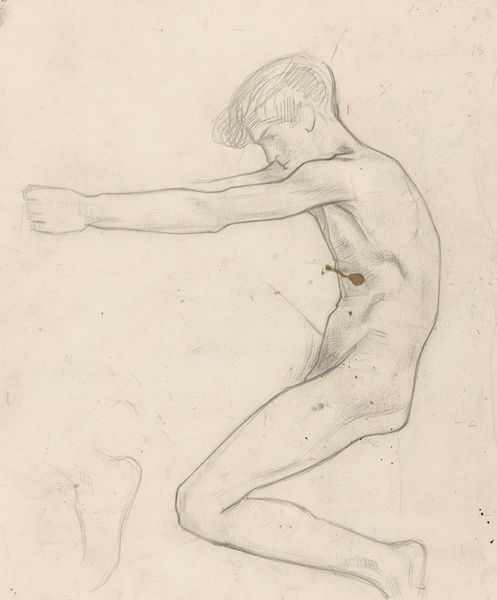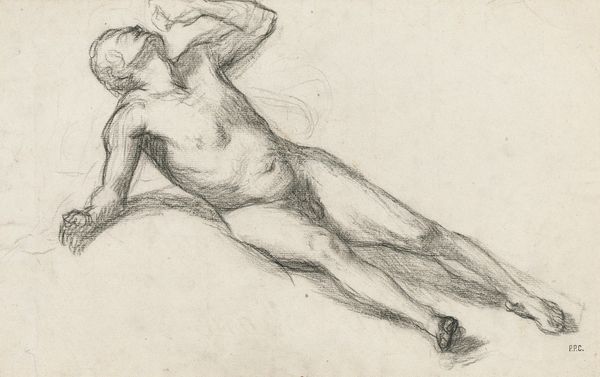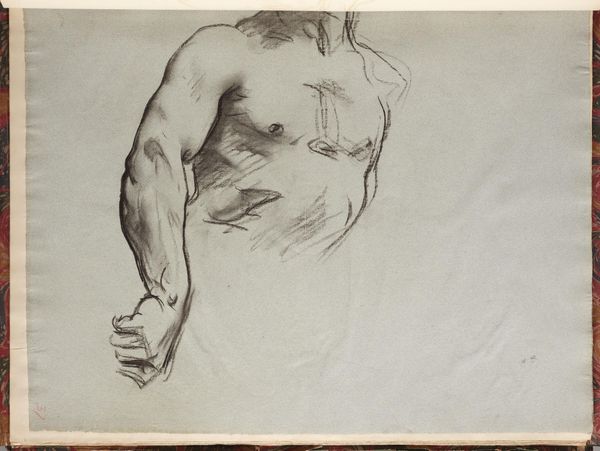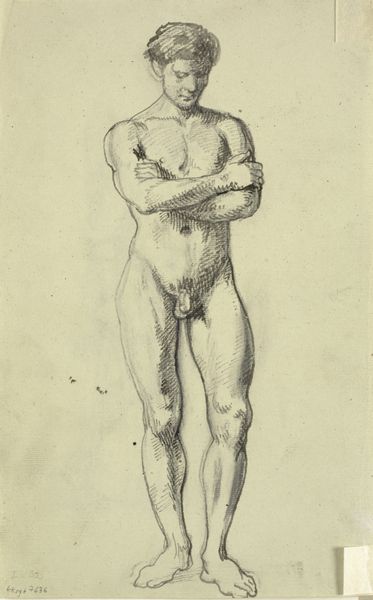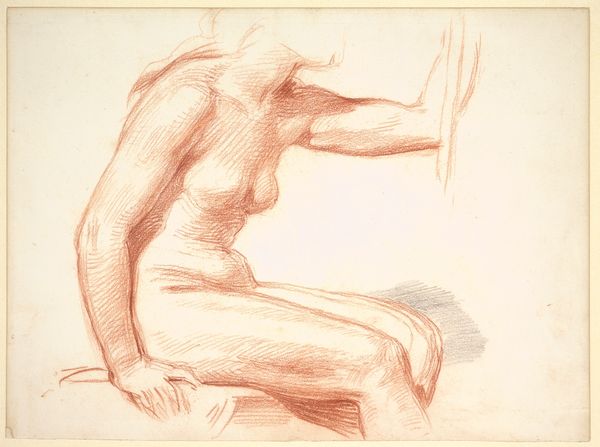
drawing, pencil
#
pencil drawn
#
drawing
#
figuration
#
pencil drawing
#
pencil
#
portrait drawing
#
nude
Copyright: Public Domain: Artvee
Editor: Here we have Richard Nicolaüs Roland Holst’s "Torso of a Male Nude," created sometime between 1878 and 1938, a pencil drawing on paper. I’m struck by the deliberate incompleteness, almost like the artist is highlighting the physicality of the torso over the complete form. How do you interpret this work, considering the medium and its subject? Curator: The materiality speaks volumes. It's a pencil drawing, so immediately we confront the intimacy of labor, the hand's direct interaction with the paper. The sketchiness undermines the historical tradition of idealizing the male nude, doesn't it? It shifts the focus away from mere aesthetics. Editor: I see what you mean. Instead of this perfect representation of the human form, the unfinished quality points more toward the act of *making*, the artistic process. What could have motivated that? Curator: Consider the period. Late 19th to early 20th century: a time of shifting social structures, changing perceptions of labor. Is this fragment of a body perhaps a commentary on the fragmenting experience of the modern worker, commodified and dehumanized? Are we, in looking at this torso, confronting a critique of the labor involved in portraying the ideal male form? Editor: So the choice of pencil, a humble material, further emphasizes this connection to the physical act of creation and potentially critiques idealized representations by alluding to the working-class body? Curator: Precisely! It's about more than just replicating form; it's about the socioeconomic implications inherent in its creation and presentation. Even the choice not to finish speaks to an artistic decision, reflecting perhaps, a dissatisfaction with conventional methods of production. Editor: It is really fascinating how viewing it through a materialist lens unlocks those deeper meanings behind artistic choices that otherwise appear to be stylistic. Curator: Exactly! It forces us to ask "what conditions made this art possible," and what ideologies are embedded within it?
Comments
No comments
Be the first to comment and join the conversation on the ultimate creative platform.
